Julien Marzat
Model-Free versus Model-Based Reinforcement Learning for Fixed-Wing UAV Attitude Control Under Varying Wind Conditions
Sep 26, 2024



Abstract:This paper evaluates and compares the performance of model-free and model-based reinforcement learning for the attitude control of fixed-wing unmanned aerial vehicles using PID as a reference point. The comparison focuses on their ability to handle varying flight dynamics and wind disturbances in a simulated environment. Our results show that the Temporal Difference Model Predictive Control agent outperforms both the PID controller and other model-free reinforcement learning methods in terms of tracking accuracy and robustness over different reference difficulties, particularly in nonlinear flight regimes. Furthermore, we introduce actuation fluctuation as a key metric to assess energy efficiency and actuator wear, and we test two different approaches from the literature: action variation penalty and conditioning for action policy smoothness. We also evaluate all control methods when subject to stochastic turbulence and gusts separately, so as to measure their effects on tracking performance, observe their limitations and outline their implications on the Markov decision process formalism.
* Published at ICINCO 2024
Smooth Path Planning Using a Gaussian Process Regression Map for Mobile Robot Navigation
Jul 08, 2024Abstract:In the context of ground robot navigation in unstructured hazardous environments, the coupling of efficient path planning with an adequate environment representation is a crucial topic in order to guarantee the robot safety while ensuring the accomplishment of its mission. This paper discusses the exploitation of an environment representation obtained via Gaussian process regression (GPR) for smooth path planning using gradient descent B\'ezier curve optimisation (BCO). A continuous differentiable GPR of the terrain traversability and obstacle distance is used to plan paths with a weighted A* discrete planner, a T-RRT sampling-based planner and BCO using A* or T-RRT computed paths as prior. Numerical experiments in procedurally generated 2D environments allowed to compare the paths planned by the described methods and highlight the benefits of the joint use of the GPR continuous representation and the BCO smooth path planning with these different priors.
Online Localisation and Colored Mesh Reconstruction Architecture for 3D Visual Feedback in Robotic Exploration Missions
Jul 21, 2022



Abstract:This paper introduces an Online Localisation and Colored Mesh Reconstruction (OLCMR) ROS perception architecture for ground exploration robots aiming to perform robust Simultaneous Localisation And Mapping (SLAM) in challenging unknown environments and provide an associated colored 3D mesh representation in real time. It is intended to be used by a remote human operator to easily visualise the mapped environment during or after the mission or as a development base for further researches in the field of exploration robotics. The architecture is mainly composed of carefully-selected open-source ROS implementations of a LiDAR-based SLAM algorithm alongside a colored surface reconstruction procedure using a point cloud and RGB camera images projected into the 3D space. The overall performances are evaluated on the Newer College handheld LiDAR-Vision reference dataset and on two experimental trajectories gathered on board of representative wheeled robots in respectively urban and countryside outdoor environments. Index Terms: Field Robots, Mapping, SLAM, Colored Surface Reconstruction
Learning-based vs Model-free Adaptive Control of a MAV under Wind Gust
Jan 29, 2021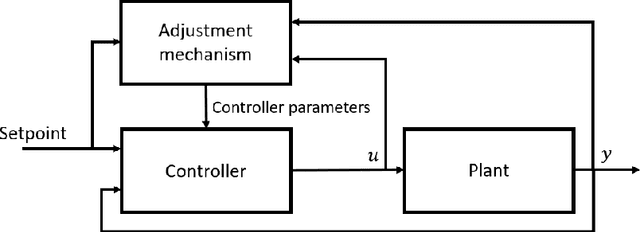

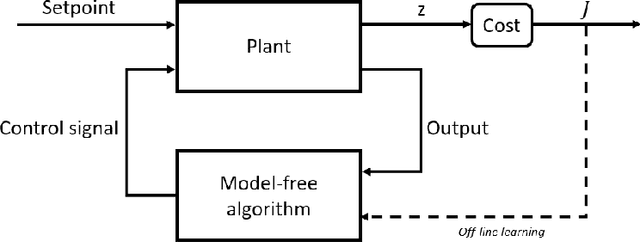
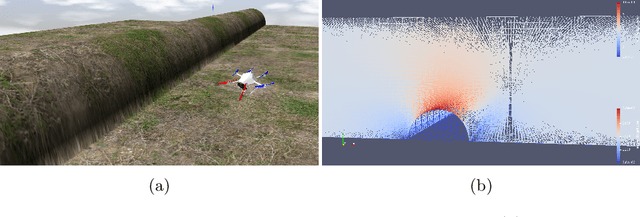
Abstract:Navigation problems under unknown varying conditions are among the most important and well-studied problems in the control field. Classic model-based adaptive control methods can be applied only when a convenient model of the plant or environment is provided. Recent model-free adaptive control methods aim at removing this dependency by learning the physical characteristics of the plant and/or process directly from sensor feedback. Although there have been prior attempts at improving these techniques, it remains an open question as to whether it is possible to cope with real-world uncertainties in a control system that is fully based on either paradigm. We propose a conceptually simple learning-based approach composed of a full state feedback controller, tuned robustly by a deep reinforcement learning framework based on the Soft Actor-Critic algorithm. We compare it, in realistic simulations, to a model-free controller that uses the same deep reinforcement learning framework for the control of a micro aerial vehicle under wind gust. The results indicate the great potential of learning-based adaptive control methods in modern dynamical systems.
Sim-to-Real Transfer with Incremental Environment Complexity for Reinforcement Learning of Depth-Based Robot Navigation
Apr 30, 2020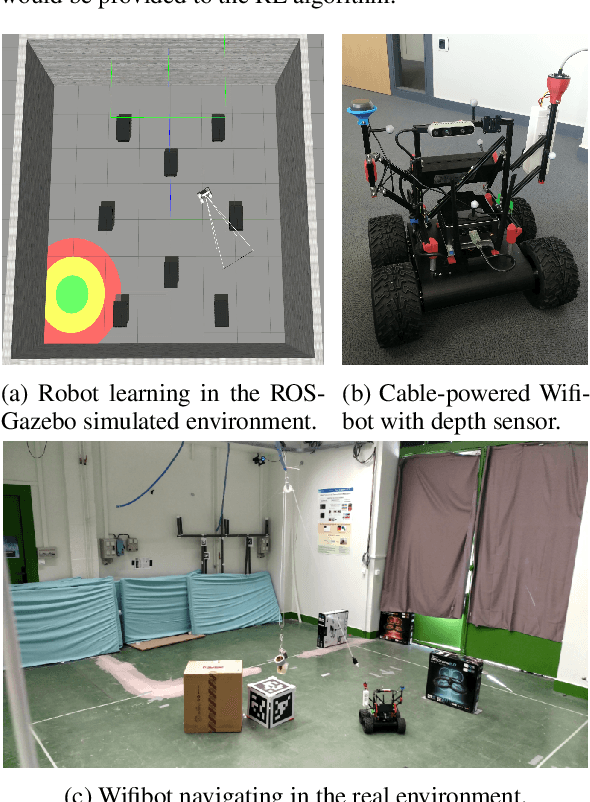
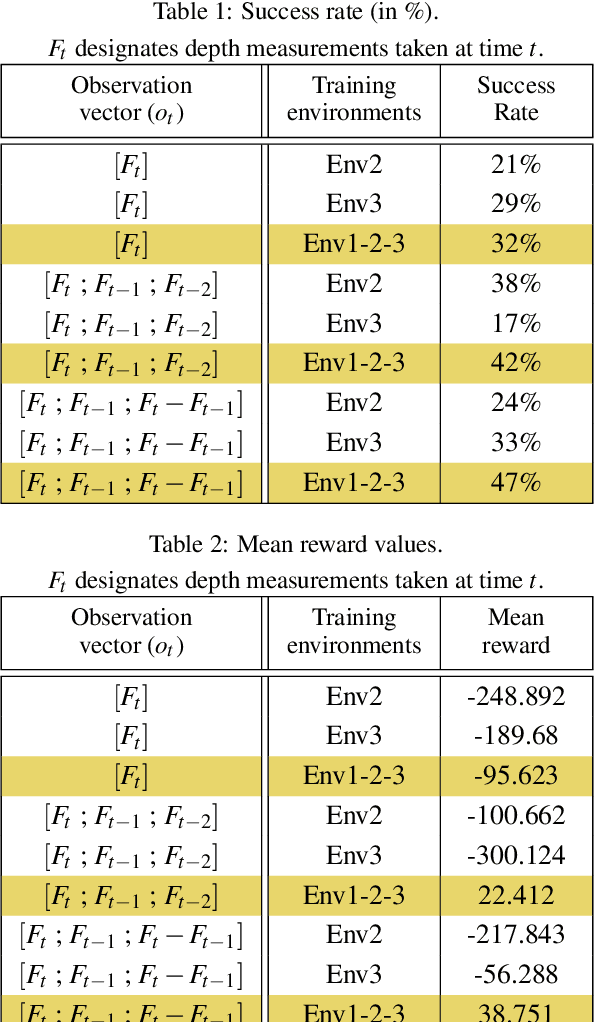
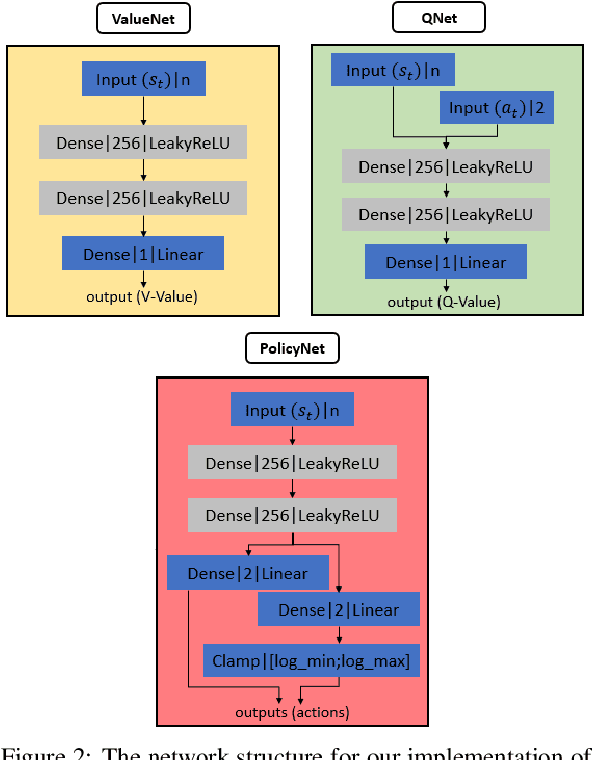
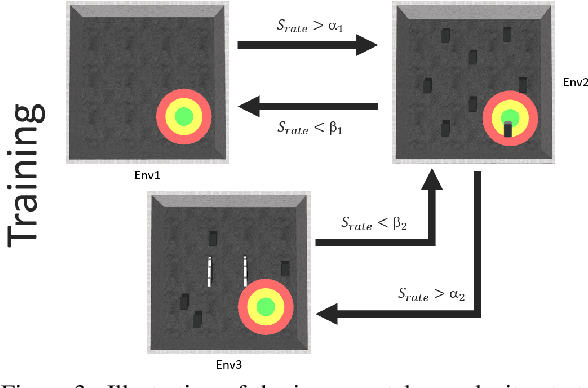
Abstract:Transferring learning-based models to the real world remains one of the hardest problems in model-free control theory. Due to the cost of data collection on a real robot and the limited sample efficiency of Deep Reinforcement Learning algorithms, models are usually trained in a simulator which theoretically provides an infinite amount of data. Despite offering unbounded trial and error runs, the reality gap between simulation and the physical world brings little guarantee about the policy behavior in real operation. Depending on the problem, expensive real fine-tuning and/or a complex domain randomization strategy may be required to produce a relevant policy. In this paper, a Soft-Actor Critic (SAC) training strategy using incremental environment complexity is proposed to drastically reduce the need for additional training in the real world. The application addressed is depth-based mapless navigation, where a mobile robot should reach a given waypoint in a cluttered environment with no prior mapping information. Experimental results in simulated and real environments are presented to assess quantitatively the efficiency of the proposed approach, which demonstrated a success rate twice higher than a naive strategy.
 Add to Chrome
Add to Chrome Add to Firefox
Add to Firefox Add to Edge
Add to Edge